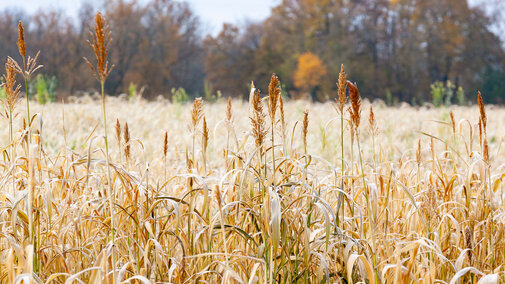Colder temperatures have already caused some freezing in the Great Plains and Midwest. What have those temperature done to the forages and how can livestock be kept safe?
Short-term freezing temperatures may cause sorghum species such as sorghum-sudangrass or any grain (milo) or forage sorghum to become lethal to livestock. Prussic acid forms when plant cell membranes are broken due to freezing and allows the chemicals in the cells to mix. This forms a cyanide compound that can be deadly to livestock if consumed. Sudangrasses have the lowest risk while forage and grain sorghum have the highest. The millet species do not have prussic acid issues.
The good news is that after seven days, the toxic chemicals dissipate into the air. Every time there is a freeze (without temperatures low enough to completely kill the plants), that seven day clock resets, just like the 30 minute lightening delay at football games. The new growth on sorghums that have had frost damage are very dangerous as they have the highest concentrations of prussic acid. Remember again, mechanically harvesting these forages as hay or silage allows the prussic acid to dissipate, making consumption safe.
If there is a chance of freezing temperatures, remove livestock from the pasture and wait the seven days before grazing once again. The hours immediately after a frost have the highest level of toxic compounds. If there is regrowth in the days after a freeze, wait to begin grazing until those shoots are 15-18 inches tall or five to seven days after the plant has been completely killed by the frost. If sorghum family plants have had extra nitrogen applied or are growing in high nitrogen soils, the risk of prussic acid is even higher.

